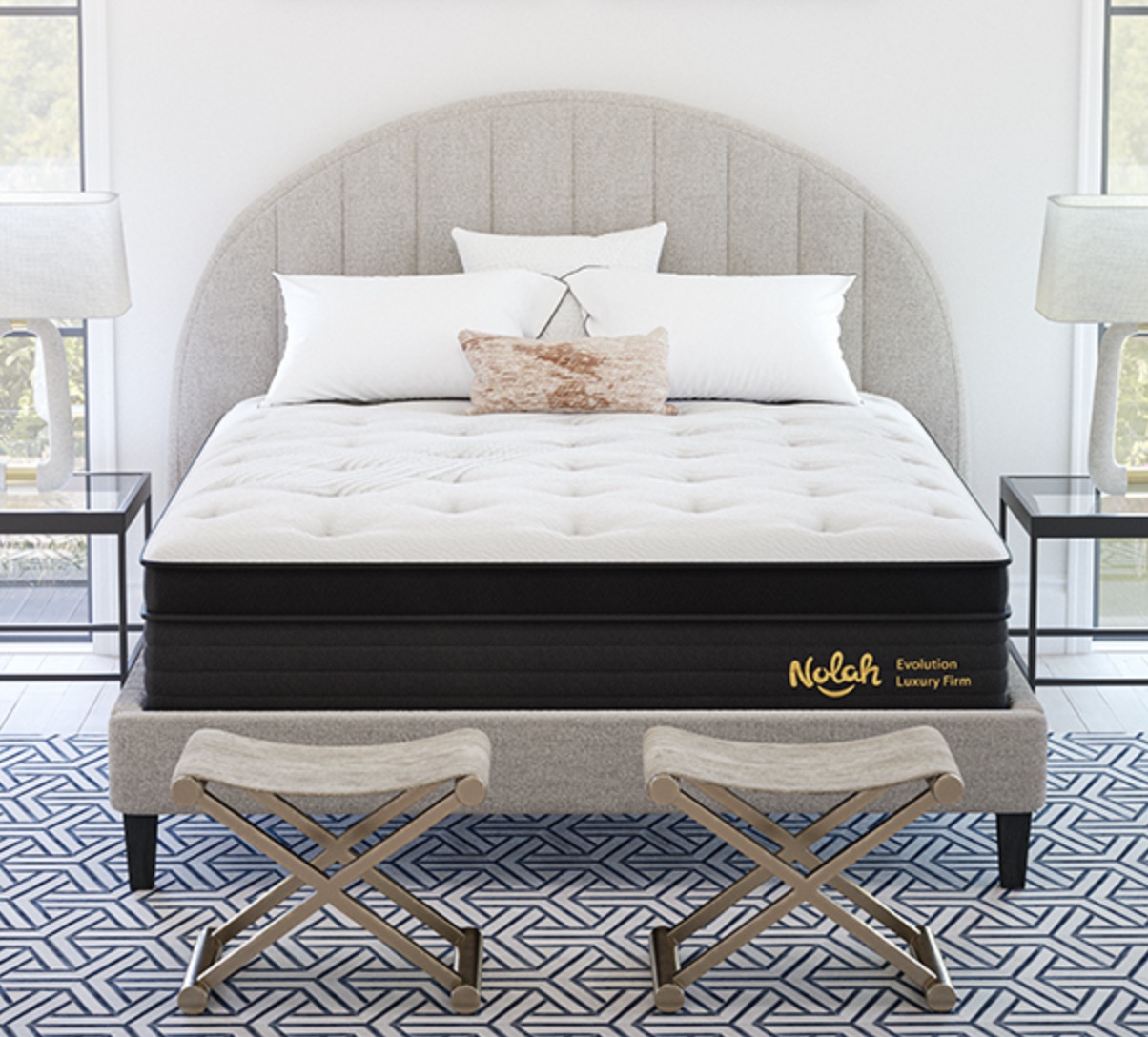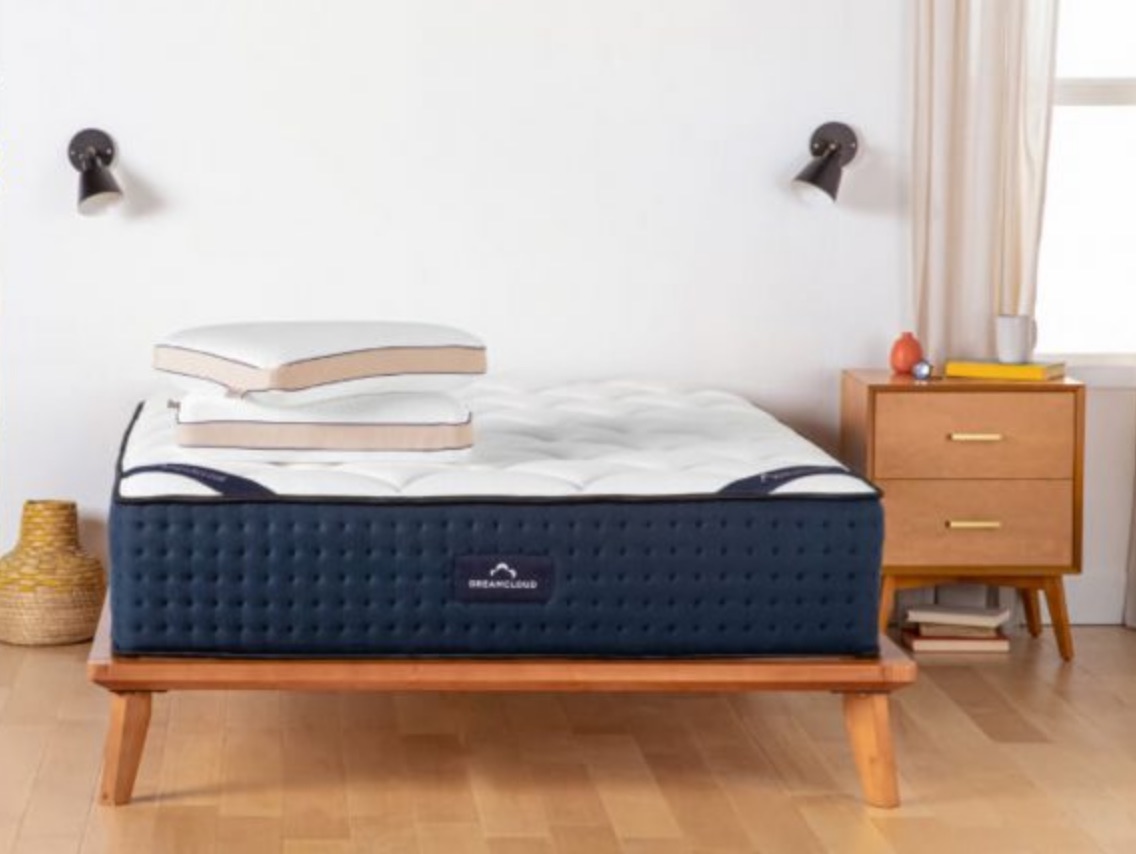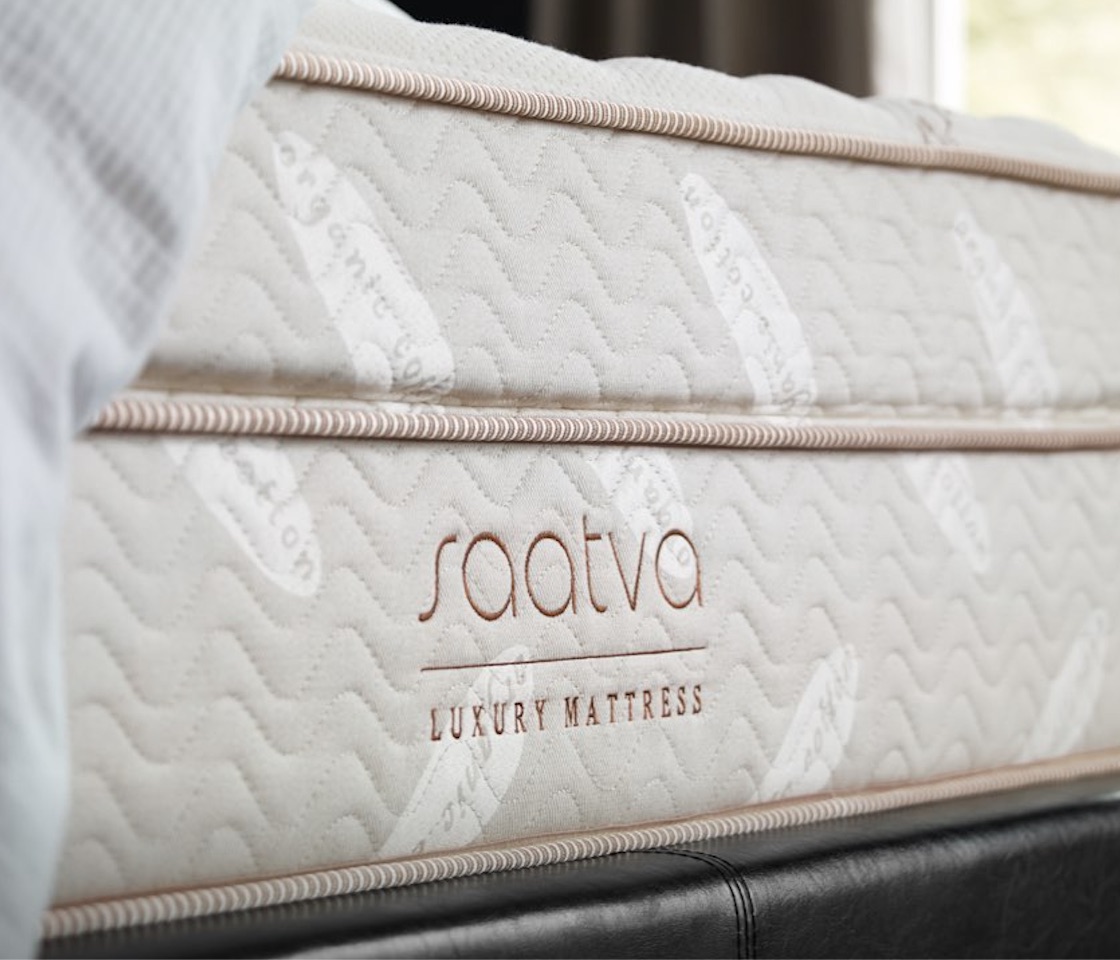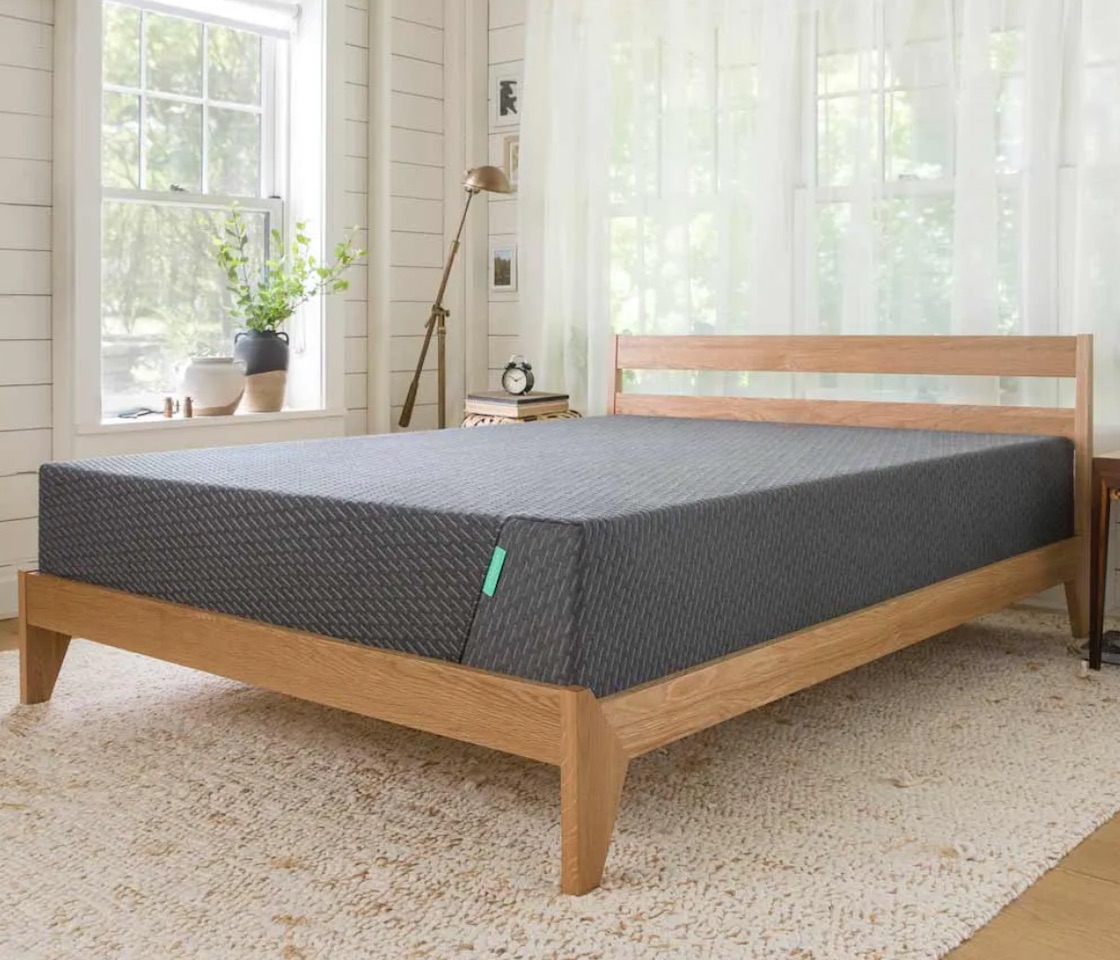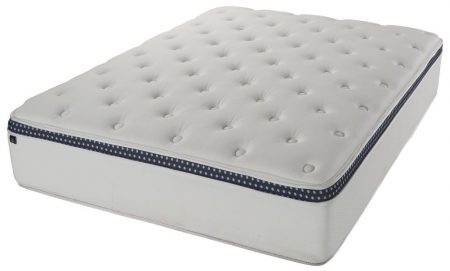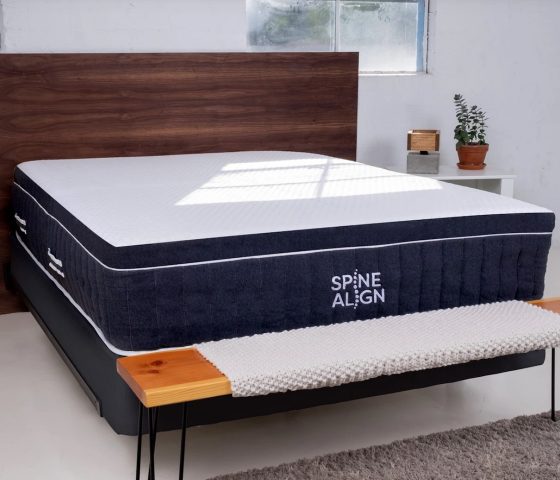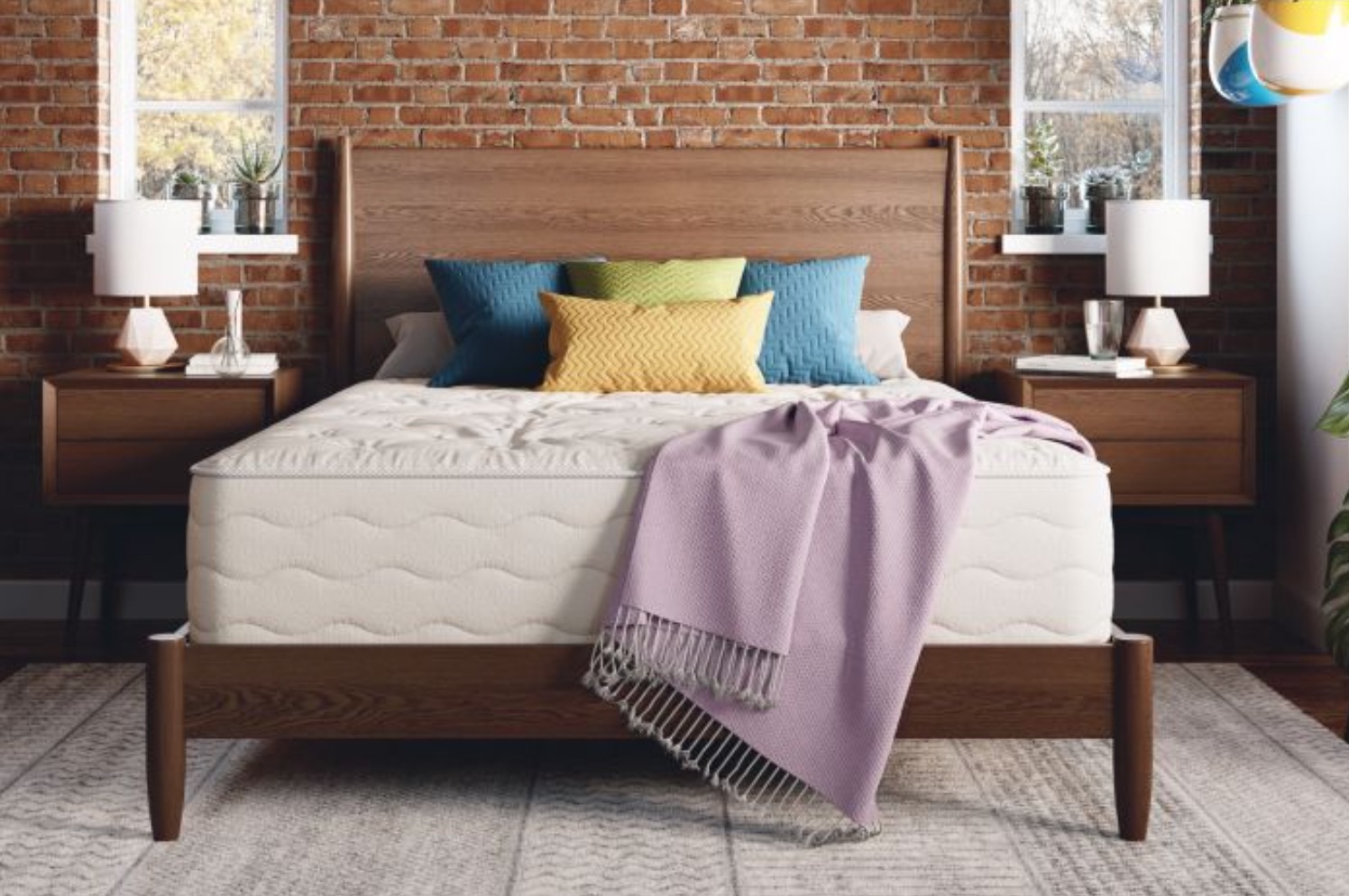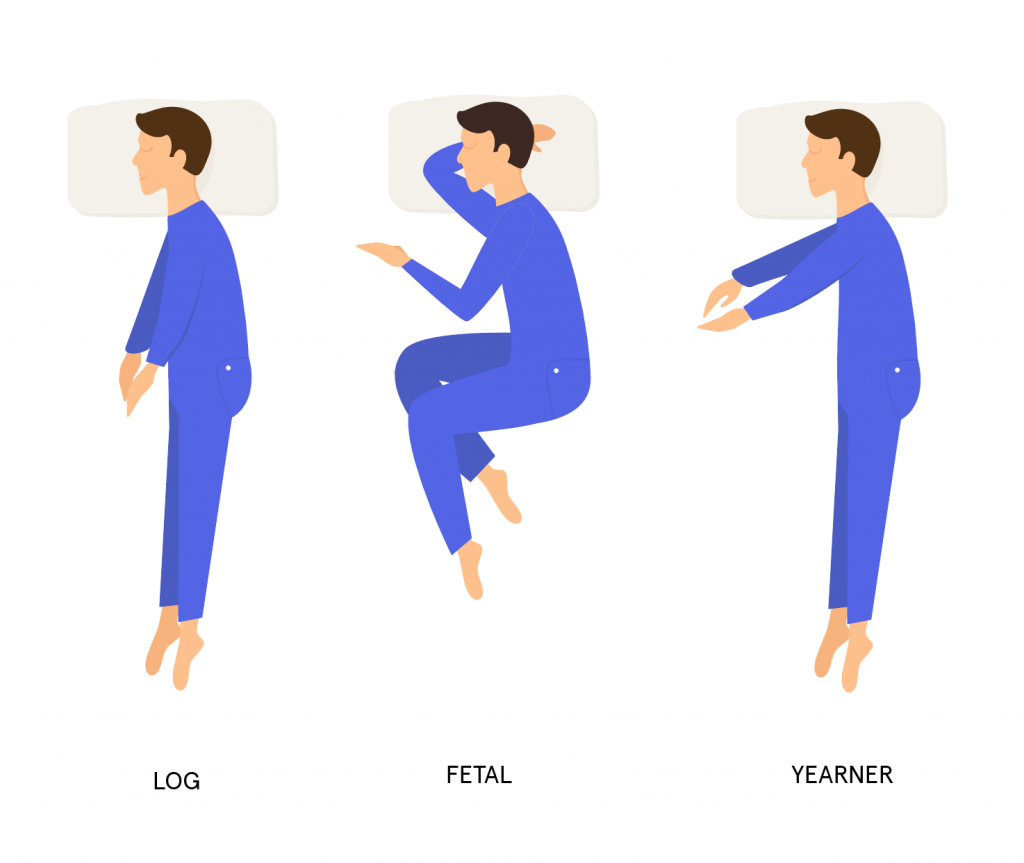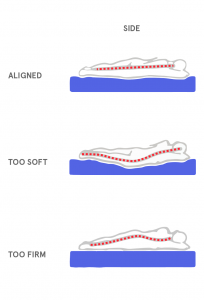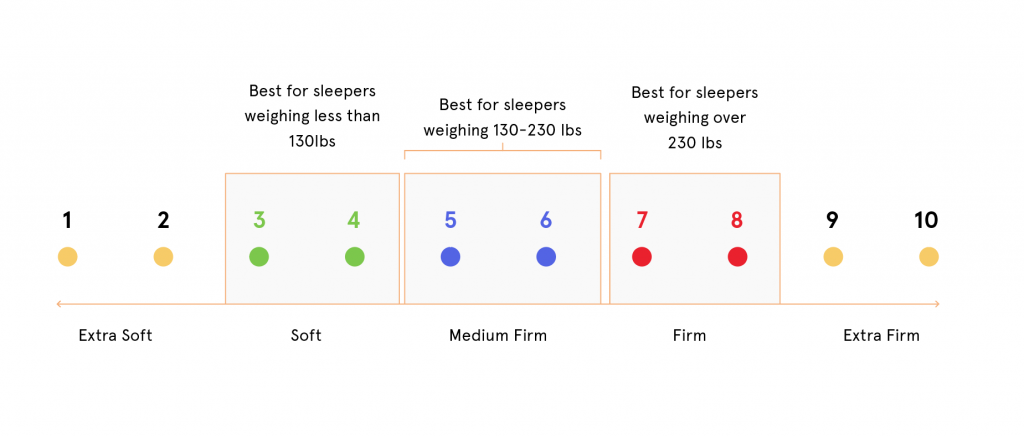What Should Side Sleepers Look for in a Mattress
Important mattress qualities to consider as a side sleeper include:
- Contouring: The best mattresses for side sleeping contour evenly based on where weight is concentrated. This ensures extra support for heavier areas of the body like the torso and hips, and gentler cushioning for the head and legs. Mattresses with thick comfort layers and medium to medium firm feels or latex typically provide the best contouring.
- Support: While contouring is key, you’ll probably sink too much into a mattress that feels excessively soft. Mattresses with sturdy support systems push back against the body and help maintain an even sleep surface, which is important for spinal alignment.
- Pressure Relief: A mattress that reduces pressure is important for side sleepers since this position can create pressure buildup in the shoulders, lower back, and hips. Deep cushioning, even contouring, and adequate support around these areas are needed to alleviate pressure.
- Material Quality and Longevity: A mattress made from durable, high-quality materials is better for side sleeping. Mattresses with components that wear out after a few years of use may sag or develop indentations on the surface that affects the overall support level.
What Is the Best Mattress Firmness for Side Sleepers?
Your sleep position and body weight will likely dictate which firmness level feels most comfortable. For this reason, the firmness preferences of a side sleeper who weighs less than 130 pounds may significantly differ from a side sleeper weighing more than 230 pounds.
The following firmness recommendations are based on extensive hands-on evaluations using testers who belong to different weight groups. These recommendations are subjective and may not apply to your individual preferences, but they reflect our findings for the majority of side sleepers. Please note we judge firmness using a 10-point scale, with 1 being the softest and 10 the firmest.
The diagram below illustrates the most preferred firmness settings for side sleepers in all three weight groups.

What Type of Mattress Is Best for Side Sleeping?
Every individual mattress model is unique, but the vast majority fall into one of five general construction categories. Each category has advantages and disadvantages, but some are better equipped for side sleepers.
Foam Mattresses
A foam mattress features top layers of memory foam or adaptive polyfoam, followed by support layers of dense polyfoam. These mattresses usually excel at even contouring and weight distribution, which can promote spinal alignment and alleviate pressure for side sleepers.
- Downsides: Many foam mattresses absorb and retain excess body heat. Foam doesn’t provide the same stability as metal coils, so edge support and ease of movement may also be lacking.
- Average Price (Queen): $800 to $1,100
Hybrid Mattresses
A hybrid is a type of innerspring with thick comfort layers of foam, latex, and/or microcoils. The support system almost always contains individually pocketed coils, which reinforce the sleep surface without generating too much motion transfer. Hybrids are a good choice for side sleepers who want a balance of cushioning and stability, but not too much of either.
- Downsides: Disadvantages of hybrids often depend on the design. For instance, hybrids with thick foam layers can retain too much body heat and feel unstable along the edges, while firmer hybrids with thin comfort layers may not alleviate pressure or isolation motion well. Hybrids can also be somewhat expensive.
- Average Price (Queen): $1,500 to $2,200
Latex Mattresses
Latex is a naturally responsive material derived from rubber tree plants. An all-latex mattress usually features a softer, more adaptive comfort layer over denser support layers. Latex is highly durable, so these mattresses tend to last a long time, and those with ventilated layers don’t retain as much heat as foam mattresses.
- Downsides: Latex gently cushions the body rather than contouring closely, so these mattresses may not alleviate enough pressure for side sleepers. They are also fairly costly, as latex is expensive to process.
- Average Price (Queen): $1,600 to $2,200
Innerspring Mattresses
Traditional innersprings have thin comfort layers of foam or fiber padding, followed by thick coil systems. Side sleepers may not receive enough pressure relief from innersprings due to their lack of cushioning material, but these mattresses are responsive and easy to move across. Most innersprings also sleep cool due to steady airflow through the coil layer.
- Downsides: Innersprings have an average lifespan of five to six years, making them the least durable mattress type. Side sleepers will likely prefer the thick cushioning layers of a hybrid model over the thin padding of an innerspring.
- Average Price (Queen): $700 to $1,000
Airbed Mattresses
Airbeds feature support cores with adjustable air chambers. By adding or releasing air from these chambers, you can make certain areas of the mattress feel softer or firmer. This level of customization makes airbeds a good choice for side sleepers who need extra cushioning one night and more support the next. Most airbeds have comfort layers of memory foam or polyfoam, but some high-end models also contain latex and microcoils.
- Downsides: Airbeds are by far the most expensive mattress type on average. Compared to other mattress types, they are unmatched in terms of customized comfort – but be prepared to pay a hefty sticker price.
- Average Price (Queen): $2,400 to $3,000
Mattress Accessories for Side Sleepers
Finally, there are a few more considerations side sleepers may want to keep in mind when buying a mattress. Review the following questions. If you answer yes to any of them, expand the section to learn more about the best mattress options for you.
Choosing the right mattress is key for sleeping comfortably on your side, but other components of your sleep surface also play an important role. The goal for any side sleeper should be to optimize every aspect of their sleep area to accommodate this sleep position.
Pillows for Side Sleepers
As with mattresses, pillows can affect alignment for side sleepers. When resting on your side, adequate reinforcement is needed to keep the head and neck aligned with the spine.
Side sleepers should focus on loft, or thickness, when choosing a pillow. A medium- or high-loft pillow should properly support the head and neck. Most side sleepers prefer pillows that measure 4 to 7 inches thick.
Material composition is also important. A pillow with fill that sinks when weight is applied – such as down, feathers, and down alternative fibers – may not keep the head and neck upright even if the loft is high. Pillows with memory foam, latex, and buckwheat hulls usually provide the best support and won’t sink as much beneath the weight of your head.
Mattress Toppers for Side Sleepers
If your mattress feels too soft or too firm to accommodate you while sleeping in the side position, buying a new mattress may be the best solution. However, mattresses are an expensive investment. A mattress topper can provide a temporary fix while you save up for a new bed.
Toppers are layers of cushioning material that rest on your sleep surface, serving as a buffer between your body and the mattress. You should consider a softer topper if your mattress feels too firm. Likewise, a firmer topper can provide extra support if your mattress feels too soft. Generally, the thicker a topper’s profile is, the softer it will be. Most toppers sold today measure 1.5 to 4 inches thick.
Since cushioning is important for side sleepers, the best toppers for this position usually contain solid memory foam, polyfoam, and latex. Those who prefer a very soft feel may also feel comfortable on toppers containing down and feathers, which are also known as featherbeds.
